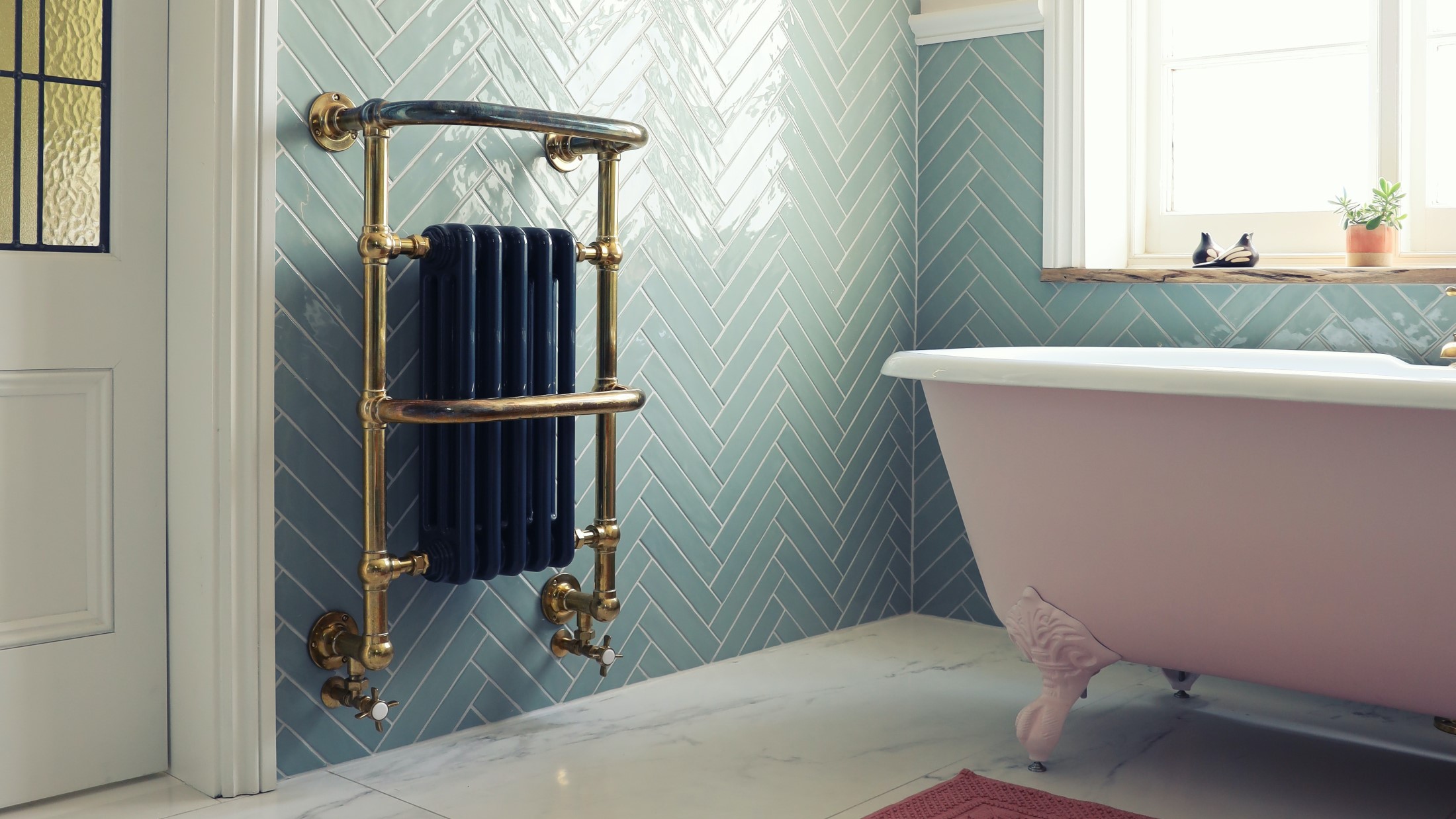
Save on your heating bill with the right radiator

Most recent
The right radiator can make a big difference and help you save up to 30% on your heating bill.
Radiators come in a lot of shapes and sizes. Picking the right radiator can not only improve comfort at home but also help you save on your heating bill. The average lifespan of a radiator is around fifteen to twenty years. During that time more modern and efficient versions came onto the market. If you haven’t replaced the radiators when moving in or haven’t performed maintenance over long stretches of time, replacing them might be worthwhile. Radiators will also become less efficient over time due to wear and tear such as blockages, rust, and corrosion.
Types of radiators
We can distinguish several types of radiators: steam radiators, hot water radiators, and electric radiators. The steam radiator is the oldest variant and the least efficient of the plumbed radiators. A steam radiator boils water to generate steam which is distributed through a series of pipes managed by a central heating system. Steam radiators are highly inefficient due to the time between boiling and distribution. Due to their setup, according to Lee Wallender at The Spruce, steam radiators require a lot of maintenance and add humidity to a space, generating unnecessary noise whilst doing so.
Therefore, most modern homes utilize hot water radiators. The Department of Energy notes it is the most common heat distribution system after forced-air heating systems. Hot water radiators don’t add humidity to space and require less maintenance. One drawback of the hot water system is air entering the system. This can result in the air putting pressure on the different valves that connect the radiators, which open them and may result in the leaking of water.
Electric radiators aren’t connected through a piping system, working independently from each other. According to DIY.com, these types of radiators are easy to install as they make use of the regular plug socket available in the space. If not, an electrician will perform the installation. As the systems operate independently, this ensures no energy is wasted in rooms that aren’t in use.
Understanding heat generation with BTU
The heat output of a radiator is measured through BTU, which stands for British Thermal Units. Hudson Reed explains the BTU as follows, “A BTU is approximately the energy required to heat 1lb of water from 39°F to 40°F. The heat output of radiators and towel warmers is often given in the form of BTUs, which allows homeowners to be sure that the products they are buying will supply enough heat.”
Hudson Reed notes that Watts are used as an alternative to BTU, stating that 1 Watts equals about 3.41 BTU per hour. The company provides an easy-to-use calculator which helps you to determine the appropriate heating system based on your desired space, including the type of glazing installed. Only Radiators adds that it’s recommended to always opt for a radiator with a higher BTU than the advised minimum. This will give you the flexibility to heat during colder conditions and lower when necessary.
Selecting the right Delta T value
For the radiator to optimally utilize its heating capabilities you will need to consider the Delta T value. Stelrad explains the Delta T value as, “The difference in average temperature between the water circulating throughout your central heating system and the room temperature.” Stelrad provides an example where the average room temperature is 20 C (68 F), and the radiator’s temperature is 70 C (158 F), which will result in a Delta T value of 50, the difference between the room and the radiator.
The right Delta T value will ensure you don’t purchase an underperforming radiator, which will result in more energy usage. Only Radiators notes a Delta T50 value is most suited for homes that are equipped with good insulation, as the value is based on a low-temperature boiler. The Delta T70 value has become out of fashion and Only Radiators recommends using a T50 or T60 value for ease of calculation. Stelrad underlines the lower Delta T value by saying that as homes become better insulated, Low Delta T radiators become a more popular and viable option.
Low-temperature radiators
A Low-Temperature Radiator utilizes the same mechanism as a regular “high” temperature radiator. It’s still connected through the piping system in your home, circulating warm water to generate heat. The major difference between a regular radiator and a low-temperature model is the temperature of the water. Low-temperature radiators utilize water heated between 40 and 50 degrees, compared to 70 and 90 degrees Celsius with regular radiators. This results in cost savings on your heating bill that go up upwards of 30 percent. With the water temperature being lower, spaces are heated more evenly due to a lower temperature difference between the floor and ceiling.
While the benefits are obvious, Netatmo notes that a low-temperature radiator is still connected to either a heat pump, a condensing boiler, a low-temperature boiler, or a solar heating system. The low-temperature radiator cannot be combined with a high-temperature boiler. Just like Stelrad, Netatmo says that your home needs to be well-insulated for the system to work optimally. This type of radiator should also be cleaned every 5 years.
An aluminum radiator uses 15% less energy
Most radiators are made out of cast iron or steel. This technology has been around for many decades, but with the advent of more advanced manufacturing technologies, aluminum radiators have seen a rise in popularity, and not only due to their modern finish. Aluminum has far superior heat conduction properties to common metals with a thermal conductivity rating of 118 BTU. Only copper has better thermal conduct with a BTU of 223. Steel on the other hand only has a BTU of 17.

According to Trade Radiators, aluminum radiators can use up to 15% less energy. UK Radiators states that such a radiator can save up to 10% on the average energy bill. After a lifespan of 25 years, the radiator can be recycled. To get the optimal return on investment, Finish-based Purmo advises positioning your new radiator where it can optimally distribute heat. Panel radiators for example work best when there’s enough space to emit heat. They recommend installing your radiators 15 centimeters (1.96 inches) from the floor and 10 centimeters (3.93 inches) below the windowsill.
Picking your favorite radiator design
Radiators come in a host of varieties. The regular classic white central heating radiator will be a familiar sight for many. Column radiators are an extension of the central heating radiator, but add more flair to your interior. A recent trend is designer radiators, which offer slick designs that fit the custom look and feel of the space. An extension of the designer radiator is the flat panel radiator, which has a flat surface. Vertical radiators, as the name implies, stretch across the wall. These types of radiators are well-suited for small spaces. Towel radiators are specifically designed to dry towels.
Note that while the design is important, you shouldn’t compromise on the heating capabilities of the system. Don’t select a radiator solely on looks. Aspects such as size play a big part in how the system will perform. Purmo warns that by selecting too small of a radiator, it will be unable to heat the room properly. Selecting a radiator that is too large, will take up unnecessary space and might be unable to release the heat efficiently.
A radiator never works alone
While the right heater can make a huge difference, not only in your comfort at home but also aesthetically, it’s also important to know that energy-saving heating systems don’t work alone. To optimally utilize the potential of such products and save as much as you can on your electricity and energy bill, your heating system should be part of an integral system of isolated windows, efficient lighting, and floor isolation.
As selecting the right radiator can be overwhelming and will differ from situation to situation, we recommend opting to work with a professional who can guide you through the different steps. A system needs to be properly configured and the previous positioning of your radiators might hurt their performance. This requires more upfront costs and work than you might’ve anticipated.
Further reading
No Results Found
The page you requested could not be found. Try refining your search, or use the navigation above to locate the post.
Most recent

How Myanmar lost 30% of its forest in 30 years
Myanmar is seeing deforestation rates increase rapidly. In the last three decades, the country already lost 30 percent...

Portugal’s struggle to part with fossil fuels
Portugal is heavily reliant on fossil fuels and its love affair with the fossil fuel industry makes transitioning to...

Climate change spells uncertain future for winemakers
Winemakers ride into an uncertain future as climate change spells greater uncertainty for their businesses. Climate...


